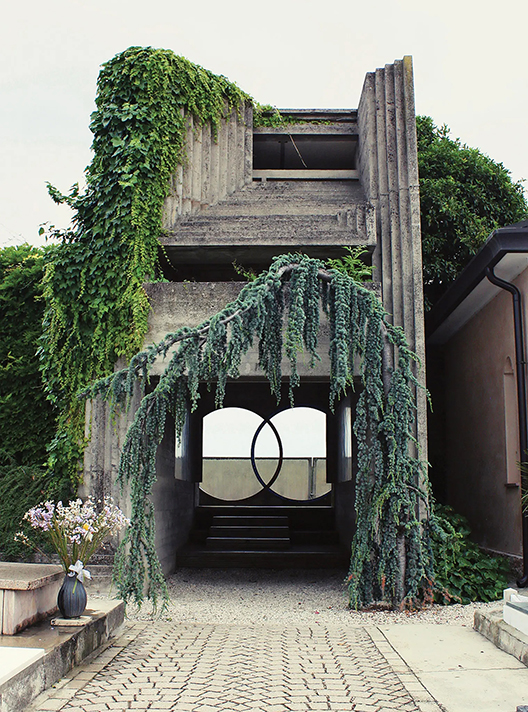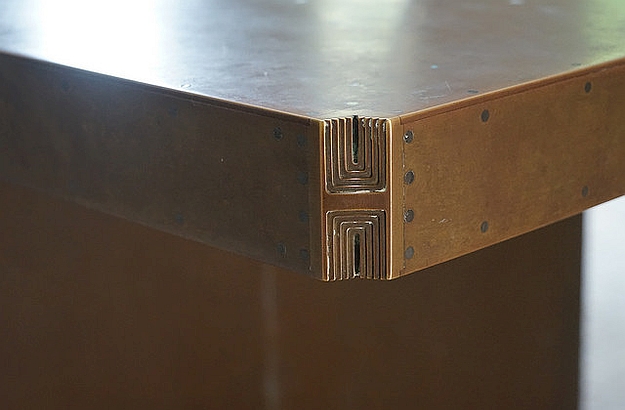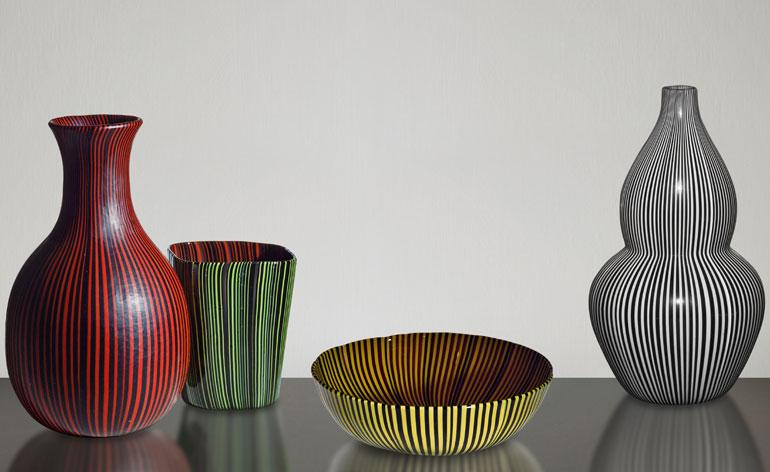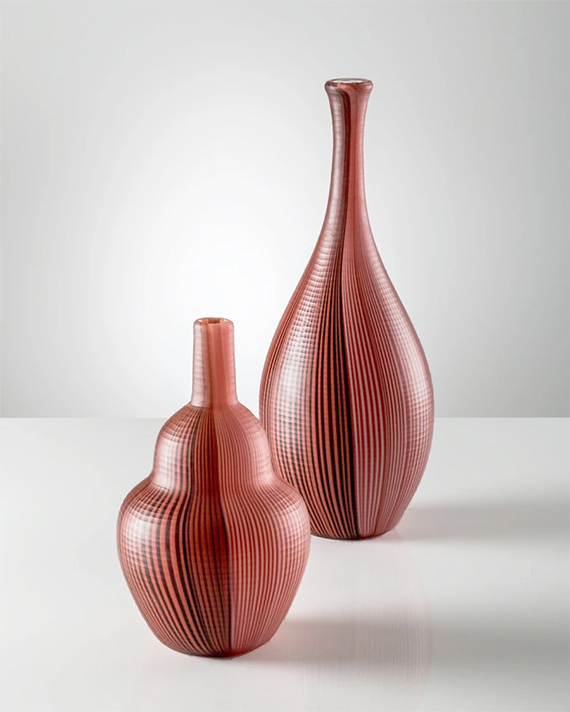
Near Treviso, the cutout at Brion Cemetery, a private mausoleum. Built in 1978, Scarpa designed the space to offer a view to the meditation pavilion.
Image courtesy of: The New York Times, photographed by: Tyler Porter
Often considered one of the 20th-century’s most underappreciated architects, Carlo Scarpa was an Italian who found his most profound influences in nature, the country of Japan, landscapes, and the history of his Venetian culture. With this in mind, Scarpa translated his interests in history and invention into beautiful craftsmanship of glass and furniture design.
Scarpa attended the Academy of Fine Arts where he focused on architectural studies; following, he graduated from the Academia in Venice as a Professor of Architecture. However, he refused to sit for the formal exam administered by the Italian government and as a result, Scarpa was not permitted to practice without associating with an accredited architect. Thus, for the remainder of his career, his clients, associates and the craftspeople with whom he worked called him “Professor” rather than “architect.”

… an amazing eye for the most minute of details.
Image courtesy of: Trust and Travel
From the beginning of his career, Scarpa preferred to work with Murano’s imaginative master glass workers rather than to adhere to the restrictions put forth by the academic culture. While other Italian Modernism architects of that time designed showy sketches as they wanted to move from the past as quickly as possible, Scarpa chose a more natural and subtle approach.
Scarpa remained consumed with details, even obsessing about handmade hinges and screws. Fellow architect and friend Philip Johnson once said about him, “Make poetry out of the smallest rod or piece of stone.” This indeed is true!

Scarpa at the Venini factory on the Island of Murano.
Image courtesy of: F.A.M.E. NYC Magazine
Decades before “organic” was popular in the west, Scarpa brought what he saw in Japan- a mixture of concrete, rusted metals, timber, and glass- to his architecture. Scarpa continued to be influenced by East Asian craft and architecture for his entire life.
Scarpa’s exploration of glass began while he worked at MVM Cappellin Glassworks between 1926 and 1931. When he was hired by Paolo Venini in 1932 as an artistic consultant, Scarpa was in his mid-twenties. He spent his days in Murano, where he partook in glassblowing traditions that date back hundreds of years. Very quickly, the Venini factory became the center of innovation with Scarpa leading the way.

“Rigati e tessuti” glass vases and bowl, 1938-1940, part of the “Rigati e tessuti” series.
Image courtesy of: Wallpaper
For fifteen years, Scarpa worked alongside Venini and his master glassblowers to create over two dozen styles all the while pioneering techniques, colors and silhouettes that modernized the ancient tradition of glassblowing. Their collaboration was put on display at important showcases such as the Venice Biennale and the Milan Triennale during the 1930s and 1940s.
In 2013, the Metropolitan Museum of Art put on an exhibition featuring 300 of the Scarpa’s works. Without doubt, the architect would have loved this as he said, “I would rather, on the whole, build museums than skyscrapers- though logic may say otherwise. Since the former may be perhaps creative, while the latter requires one to be adapt and subordinate oneself to things as they are.”

Tessuti Battuti Vases
Similar to most Venini products, these vases are made-to-order with a 4-6 week lead time. Neither shiny nor sheer, upon close inspection these vases appear to be made of fabric. The vases look as though the fabric is bent and folded over and over again.
Image courtesy of: Duplex
The Tessuti Battuti vases are perhaps the most iconic of Scarpa’s pieces that he designed for Venini. The numbered edition contains handmade blown-glass vases with bicolored “Filigrana” stripes. Lines of different colors converge and diverge as they follow the designed profile. The end result is a surface that appears to be made up of tiny folds like a perfectly pleated fabric.